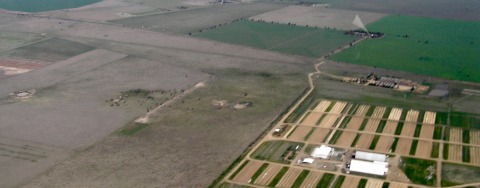Home | About CCW | Contact Us | Climate change Meaning | Causes | Solutions | Emissions | Carbon trading
Carbon sinks
Carbon sinks are where carbon is removed from the atmosphere into a permanent store. In the jargon this is carbon sequestered into either plants [or phytoplankton] or the earth for a long time, preferably permanently.
In carbon accounting terms permanent usually means 20-30 years as the sink has no value for carbon trading if the sequestered carbon is released back into the atmosphere again.
The two types of sink are:
- biosequestration where photosynthesis captures carbon from carbon dioxide (CO2) and converts it into plant tissue. On land this creates a potential sink in the vegetation, especially trees, and in the soil through the addition of leaf litter and plant roots
- man-made sinks where carbon dioxide is captured at an emission source and injected into porous rocks or cavities deep underground
Although this carbon capture and storage ( CCS ) is technically a sink, really it is mitigation (emission reduction) and not sequestration because the CO2 captured was first emitted from human activities.
Sink potential
Since the beginning of the industrial revolution around 1,500 GtCO2e of anthropogenic greenhouse gas emissions have made it to the atmosphere.
GtCO2e is a gigaton of carbon dioxide equivalents the standard unit for recording the global amounts of greenhouse gas in and released to the atmosphere
A third of this amount, 499 GtCO2e — that is 499,000 million tCO2e, or 499,000,000,000 tCO2e — has come from land clearing. This is loss from vegetation burnt or decayed when forests are cleared to grow crops and losses from the soil that has lost its protection from sun, wind and rain.
And it is still going. Each year around 15% of global greenhouse gas emissions are a result of land clearing for agriculture, settlements and infrastructure.
Although emissions from the burning of fossil fuels cannot be retrieved, re-vegetation and good soil management, especially on degraded land, can provide sequestration potential.
Soil scientists estimate that this amount could be between 4 and 7 GtCO2e annually for at least 20 years.
80 to 140 GtCO2e is a significant sink for carbon.
Add similar amounts for vegetation and it is possible to recover 10% or so of historical emissions from smarter land management without undue cost.
In fact, there would be major benefits to farmers from improved soil properties, less reliance on fertiliser, and better water retention. It is surprising that soil has been so hard to get into the carbon accounting story.
Another good reason to have carbon sinks
Most emission reduction targets set by governments as part of Kyoto protocol commitments can only be met with the help of carbon offsets because emission reduction will not be enough.
It will be necessary to purchase some carbon credits to make up the balance.
Some credits are generated from emission reduction projects (mitigation). However, the best benefit to the atmosphere comes where the credits comes from biosequestration. This is why forestry projects that grow trees on previously forested land (reforestation) and previously non-forest land (afforestation) are popular.
Growing more trees — more than business as usual — will remove some carbon dioxide from the atmosphere and provide an offset mechanism for carbon markets.
The big bonus
We know that biosequestration puts carbon into the landscape.
Re-vegetation also means that there are more trees, shrubs, herbs and grasses. These plants put carbon back into the soil. The biology in the soil gets a boost, helps hold moisture and nutrients that, in turn, supports the growth of plants.
This is a very strong positive feedback loop. Vegetation cover and biological activity is a great buffer against the effects of climate change.
It is the best form of climate change adaptation.
Using the landscape as a biological carbon sink will be a huge climate change benefit — sucking CO2 from the atmosphere — helping to balance national carbon accounts and creating carbon offset credits for trade.
And then there is a massive bonus...
What biosequestration really does is prime the global agricultural system ready for its biggest challenge, namely the feeding of 7 billion humans and their animals.
In the end investment in carbon sinks will be critical to any policy to help cope with climate change effects and global food security.
It is also wise resource management.
our sister site Ask Alloporus has more pages on food security
climate change wisdom › solutions › carbon sinks
Recent Articles
-
Reducing emissions while looking for solutions...
Nov 01, 15 04:46 PM
I've seen a lot of post's online for ideas on reducing emissions. The one suggestion I have not seen, is the most obvious. There should be a government -
Climate change evidence
Mar 24, 15 06:22 AM
Real climate change evidence has to demonstrate a change in climate. An extra sunny day or a severe storm or a flood is not enough. -
The climate change effect
Feb 19, 15 03:08 AM
What will be the climate change effect? There isn't one, there are many. Perhaps too many for us to understand.




New! Comments
Have your say about what you just read! Leave me a comment in the box below.